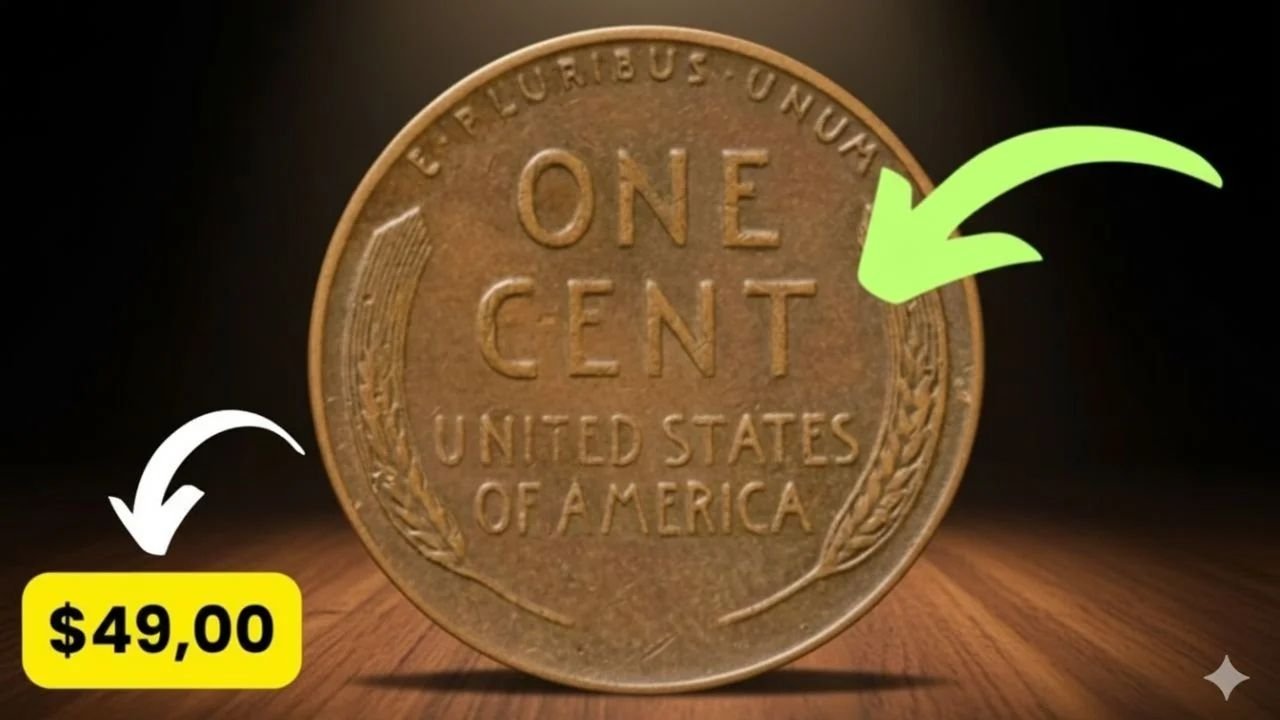Lincoln Wheat Penny Valued at $49,00: In an age of digital transactions and fleeting trends, there’s a certain magic in holding a piece of tangible history. The Lincoln Wheat Penny, a humble one-cent coin that filled the pockets of Americans for half a century, offers just that. For many, it’s a nostalgic reminder of a bygone era, perhaps discovered in an old relative’s dresser drawer. For others, it represents the thrilling possibility of an overlooked treasure, a common object with an uncommon secret. The stories these coins carry make them far more than their face value suggests.
What Makes a Simple Penny So Captivating?
Introduced in 1909 to commemorate the 100th anniversary of Abraham Lincoln’s birth, the Wheat Penny was an immediate sensation. Its design was both elegant and symbolic: Victor David Brenner’s dignified profile of Lincoln on the obverse, and two sturdy wheat stalks evoking American agriculture and prosperity on the reverse. This iconic “wheat” design is what gives the coin its beloved nickname.
While billions were minted, their modern value isn’t found in sheer numbers but in the unique circumstances of their creation. Three key factors determine a Wheat Penny’s worth:
- Scarcity: Certain years were produced in much smaller quantities, especially at specific mints.
- Condition: A coin that has been lightly circulated is worth considerably more than one that is heavily worn. Specimens in mint-state condition are the most prized.
- Minting Errors: Mistakes made during the production process, such as double-struck designs or coins struck on the wrong metal, create rare and highly sought-after variants.
The Story of the Coveted 1943 Copper Penny
The most famous example of a Wheat Penny’s hidden value is the legendary 1943 copper coin. During World War II, the U.S. Mint conserved copper for the war effort by striking pennies on zinc-coated steel, resulting in the distinctive silver-colored 1943 pennies. However, in a dramatic minting error, a handful of 1943 pennies were accidentally struck on the leftover copper planchets from 1942. These few coins became instant rarities. Imagine a penny that looks like it’s from the 1940s but is made of copper instead of steel—that is the anomaly collectors dream of finding. For a pristine, uncirculated example of this error, the market value can soar to $49,000 or more, transforming a one-cent piece into a significant financial asset.
The Dream of Discovery: Is It Still Possible?
The romantic idea of finding a fortune in your everyday change is a powerful one. While the chances are slim, they are not zero. Millions of Wheat Pennies are still out in the world, often resting quietly in inherited coin collections, forgotten piggy banks, or mixed in with modern coins obtained from a bank roll. The key is to manage expectations. The vast majority of Wheat Pennies you might find are common dates worth only a small amount over face value. Yet, the remote possibility that a rare coin slipped through the cracks decades ago is what makes checking each one a small adventure.
Your Guide to Starting Your Own Search
Feeling inspired to begin your own treasure hunt? You can start with a few simple, mindful steps:
- Look Closely: When you come across a Wheat Penny, carefully examine the date on the front (obverse). Then, look just below the date for a tiny mint mark—a “D” for Denver, “S” for San Francisco, or no mint mark for Philadelphia. Key dates known for their scarcity include the 1909-S VDB, 1914-D, and 1931-S.
- Assess Gently: Pay attention to the coin’s state of preservation. Look for sharp details in Lincoln’s hair, the wheat stalks on the back, and the overall luster of the coin. Less wear typically means higher value to a collector.
- Research Wisely: Use reputable resources like the “Red Book” (A Guide Book of United States Coins) or consult with an established, professional coin dealer. They can provide accurate information and help you understand what you have.
A Final Thought on Finding Value
The true charm of the Lincoln Wheat Penny lies in its dual nature. It is both an everyday artifact and a potential key to a hidden past. While the pursuit of a rare find is exhilarating, the simple act of holding one connects us directly to the lives and history of previous generations. It encourages us to pause, look closer at the ordinary, and appreciate the stories that are waiting to be rediscovered, one penny at a time. A Note for Aspiring Collectors: If you believe you have discovered a potentially valuable coin, it is highly recommended to seek professional validation. Having a coin authenticated and graded by a reputable third-party service like the Professional Coin Grading Service (PCGS) or Numismatic Guaranty Company (NGC) is the best way to confirm its authenticity and establish its market value.
